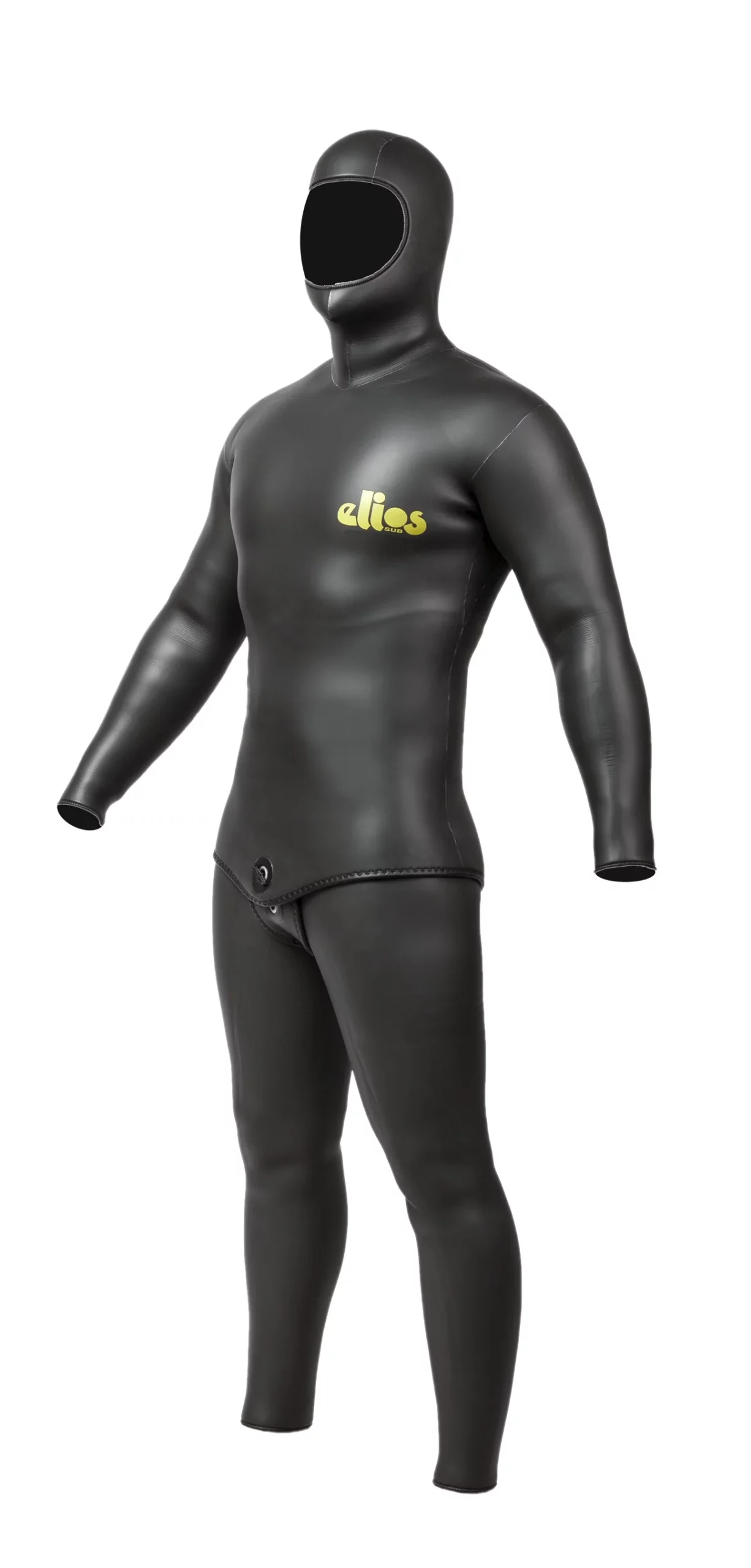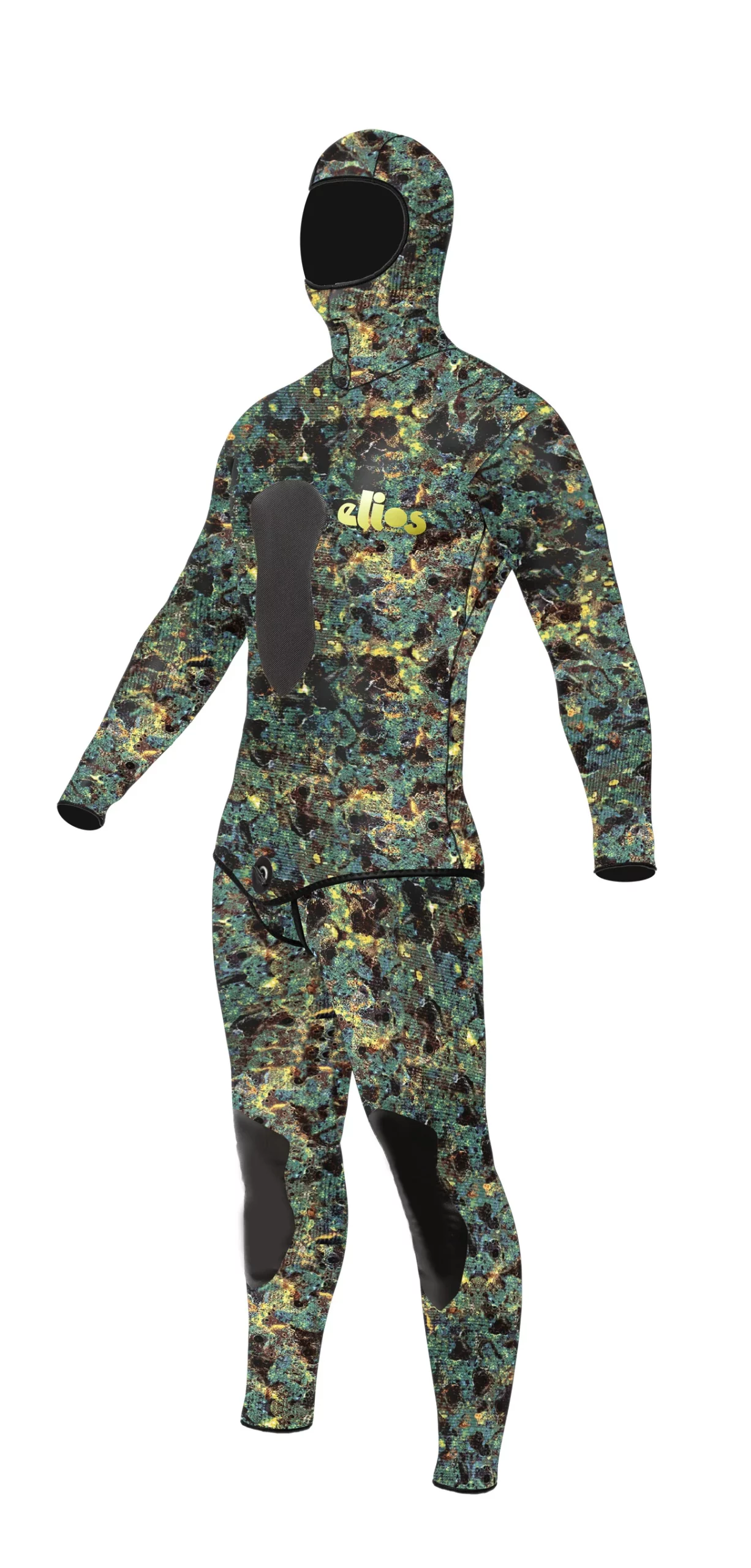No products in the cart.
Choosing the Perfect Wetsuit for Freediving & Spearfishing
Choosing the Right Spearfishing or Freediving Wetsuit
Your choice of the right wetsuit can significantly impact your warmth, flexibility, drag, and overall dive performance. Knowing the difference between freediving and spearfishing suits ensures you get gear tailored to your activity.
Choosing the right wetsuit for freediving or spearfishing is not just about thickness and fit — brand quality matters. Industry-leading manufacturers use premium neoprene, advanced cuts, and specialized coatings that can dramatically enhance your underwater experience. Within the most popular freediving and spearfishing models are the wetsuits designed and produced by brands like:
- Elios Sub (Italy),
- SEAC (Italy),
- Salvimar (Italy),
- Cressi (Italy/Spain),
- Omer (Italy),
- 29/71 (UK),
- Picasso (Portugal).

🌡️ Spearfishing Wetsuit Guide by Water Temperature
| Water Temperature | Recommended Thickness | Suit Type |
|---|---|---|
| 🌴85°F+ (29°C+) | 1.5mm shorty | Sleeveless or shorty |
| ☀️75–84°F (24–29°C) | 3mm–3.5mm | Full suit, closed cell |
| 🌊60–74°F (15–23°C) | 5mm–7mm | Two-piece recommended |
| ❄️Below 60°F (15°C) | 7mm+ | Open cell preferred |

Freediving Wetsuits Key Features
Material & Construction
Exclusively made with open‑cell neoprene (2–7 mm), these suits adhere closely to the skin, minimizing water flushing and maximizing warmth. A 5 mm open‑cell suit can keep you warm for up to 50 minutes in near‑freezing (0 °C) water.
- Thickness & Thermal Specs
Choose based on water temperature and dive depth:- 1.5–3 mm: ideal for warm (20–28 °C) tropical waters
- 5–7 mm: suited for temperate or cold water dives
- Fit and Design
Two-piece design (jacket + pants) with beavertail closure and often integrated hoods enhances fit, reduces drag, and maintains seal integrity. Smoothskin outer coatings minimize drag for freedivers.
Pros & Cons
Pros:
• Exceptional insulation and flexibility from open-cell neoprene
• Outstanding hydrodynamics with smoothskin exterior
• Lightweight for minimal buoyancy and cold-water performance
Cons:
• Fragile — subject to tears, might require lubrication to wear/remove
• Needs dedicated care (rinsing, wetsuit cleaner) to prevent neoprene degradation

Spearfishing Wetsuits
Material & Construction
Engineered for durability and built from open‑cell neoprene (3–7 mm) with external fabric lining (nylon, Lycra, spandex) to withstand abrasion from reefs and rocks.
- Camouflage & Thickness
- 3 mm: ideal for tropical water (22–26 °C)
- 5 mm: optimal for temperate zones (15–22 °C)
- 7+ mm: required in colder water (below 15 °C)
Variety of camouflage patterns for reef environments
- Design & Accessories
Two-piece suits with beavertails prevent flushing. Lined suits are easier to wear and more robust. Additional features like chest loading pads, knee reinforcements, integrated hoods, gloves, and boots enhance protection and functionality.
Pros & Cons
Pros:
• Durable and resistant to abrasion from reefs and gear
• Easier to wear without lubrication
• Camouflage and functional features (loading pads, hoods)
Cons:
• Slightly less flexibility and a bit more drag than freediving smoothskin suits
• Heavier and bulkier
🔍 Wetsuit Thickness Calculator
Choose your dive conditions to get the ideal wetsuit thickness.
Recommended thickness:
